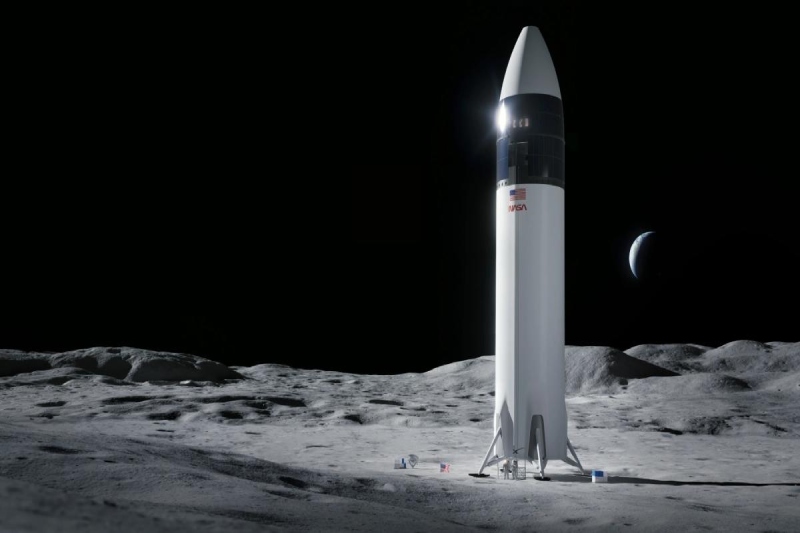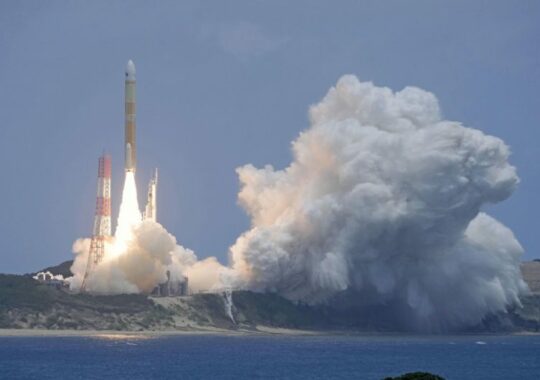According to a recent federal analysis, NASA’s ambitions to return humans to the moon in 2025 through the multiphase Artemis program were unduly optimistic to begin with. With several delays planned, it now looks more likely that humans will return to the moon in 2027 at the latest.
Although NASA and its contractors had made progress since the auditing body’s last report in September 2022, the U.S. Government Accountability Office stated in an assessment released on Thursday that “they still face multiple challenges with development of the human landing system and the space suits.” Auditors also observed that longer deadlines are a result of recent orbital test failures for the SpaceX Starship rocket system, which is intended to power NASA astronauts’ return to the moon.
The GAO study emphasized that NASA might have made a mistake in estimating how long it will take to make the projected breakthroughs in the Artemis program, given the agency had previously utilized shorter development windows for simpler projects.
The study states that it is impossible to expect the program to finish development more quickly than a year ahead of schedule given the complexity of human spaceflight, which is included in the bulk of NASA’s big projects. “GAO determined that the Artemis III mission would probably launch in early 2027 if development took as long as the average for NASA major projects.”
The auditors also observed that in order to meet the objectives set forth for the various stages of the Artemis program, NASA is using an unprecedented number of outside contractors.
According to the paper, “NASA needs to develop, acquire, and integrate several new systems in order to accomplish the Artemis III mission as planned by December 2025.” These consist of space suits for operations on the lunar surface and a method to move crew members to and from the moon. In an effort to boost creativity and lower costs, NASA is acquiring the space suits and human landing equipment through a very novel method.
These contractors include Axiom Space, which is creating a new spacesuit for Artemis astronauts, and SpaceX, which is in charge of creating the mechanism to transport astronauts to the moon.
Another crucial component of SpaceX’s plan to place men on the moon with Artemis III appears to be behind schedule. It involves creating a mechanism to launch numerous tankers that will provide fuel to an orbiting depot before delivering it to the system for human landing. NASA documents cited in the article indicate that SpaceX has not advanced far enough in “maturing the technologies needed to support this aspect of its plan.”
NASA has asked about $12.4 billion over the next five years to develop the lunar human landing system and update space suits, according to the GAO study.NASA used the huge Space Launch System rocket and the Orion space capsule to successfully finish the 25-day Artemis I mission last December.
NASA specialists tested the new SLS components, many of which were repurposed from the space shuttle program and other systems, as well as the Orion space capsule, during the crewless Artemis I mission.
The goal of the three-phase Artemis I program is to return humans to the moon for the first time since the last Apollo moon landing in December 1972.
With a four-person crew in the Orion capsule, Artemis II is presently scheduled for launch in 2024. During its maiden flight, the vehicle will circle the moon for more testing. It now seems that the Artemis III mission, which will involve landing humans on the moon, will take place no earlier than in 2027.
NASA intends to launch the Lunar Gateway, a small space station, into lunar orbit along the route. It also proposes to build the Artemis Base Camp, a moon base station.
NASA outlines some of the reasons it is spending billions of dollars to prioritize lunar landings once more in a post on the Artemis missions website.
NASA claims that it is returning to the moon in order to further scientific research, generate economic benefits, and serve as an inspiration to the Artemis Generation of explorers. “We will forge an international alliance and pursue deep space exploration for the common good, all the while upholding American leadership in exploration.”
Although going back to the moon seems like a “been there, done that” kind of thing, NASA claims that as part of the Artemis mission series, it is dedicated to achieving a number of other firsts, such as taking manned exploration farther into the solar system.
NASA claims in a web page that “with Artemis missions, NASA will land the first woman and the first person of color on the moon, using innovative technologies to explore more of the lunar surface than ever before.” “We’re going to work with business and international partners to construct the first permanent lunar base. Subsequently, we will apply the knowledge we acquire on and around the moon to make the next enormous leap—sending the first humans to Mars.





